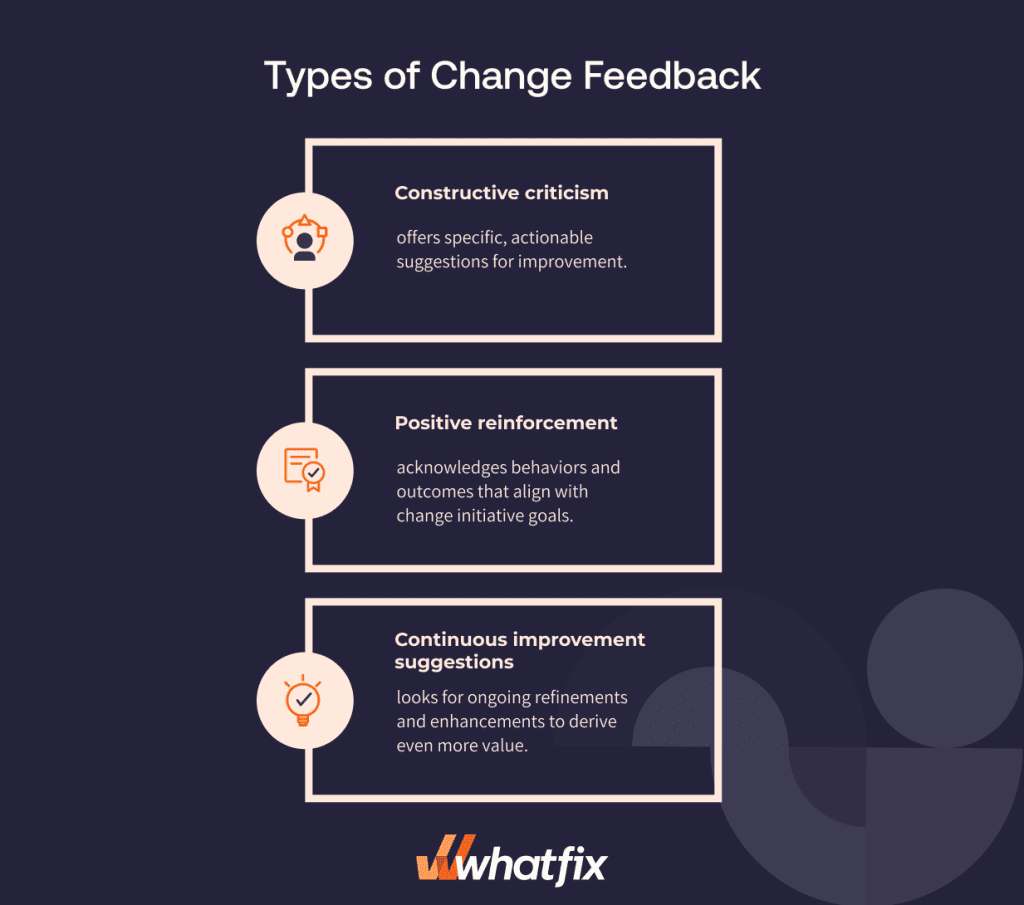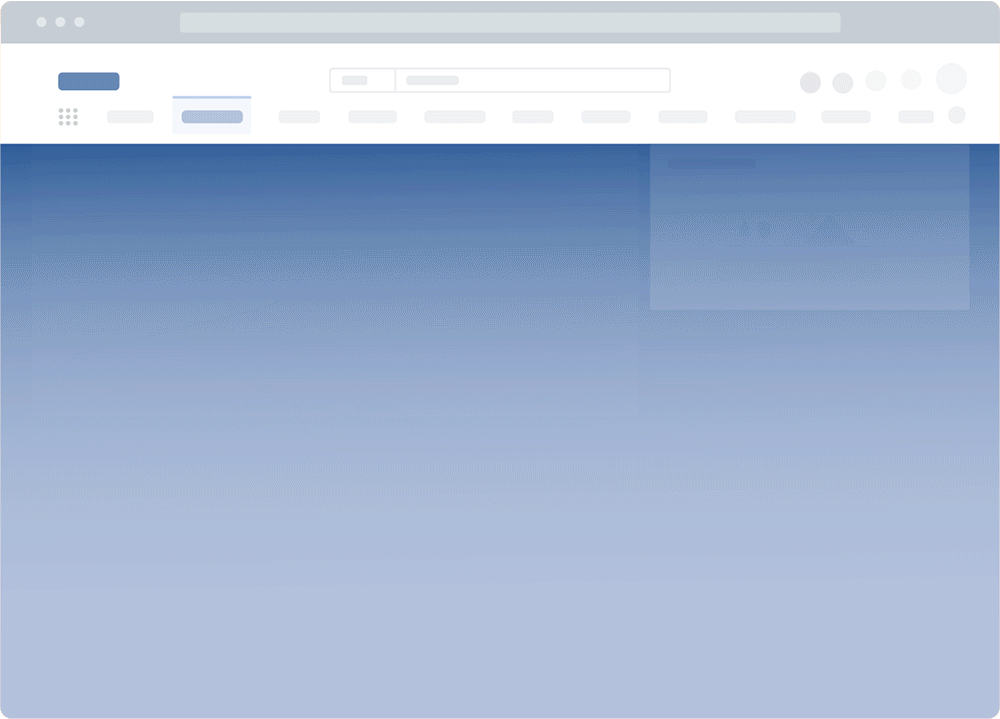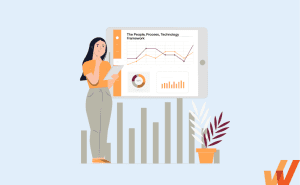According to research from Explorance, a main cause for “The Great Resignation” is that nearly half of employees and 40% of executives surveyed say they don’t believe their feedback leads to meaningful change. Of those employees, 33% will seek new employment.
This suggests that there is often a disconnect between leadership and the actual experiences and insights of employees. While organizations monitor their change progress through reports and updates, feedback from those on the frontlines (ie. most impacted by a change) is often overlooked.
Driving change adoption within your organization requires proper preparation, implementation, support, and more. Employee feedback is a critical part of understanding what works and what doesn’t in terms of rolling out change. Having a feedback system built into your change management strategy is critical for making long-term, beneficial improvements across your company and team.
In this article, we’ll explore why change feedback is essential for achieving transitional success, types of feedback to collect during times of change, how to create a change feedback loop with your workflow, and best practices to follow.
What Is Change Feedback?
Change feedback refers to the process of collecting and evaluating the input and opinions of change initiatives from people within your organization that are directly impacted by the change. Change feedback loops enable organizations to improve transition, migration, and implementation processes and ensure the changes made achieve the desired business outcomes.
Why You Need to Collect Employee Feedback During Change
Collecting feedback throughout the change process leads to more positive business outcomes and drives adoption of new processes and procedures. A few of the biggest benefits of collecting change feedback include:
1. Enhanced decision-making
End-user feedback provides real-time insights into how changes are perceived and experienced at different levels of the organization. By understanding these perspectives, leaders and change managers can make informed decisions that are more likely to align with the needs and expectations of the workforce. This data-driven approach enables adjustments to be made swiftly and strategically, ensuring that the change process remains aligned with organizational goals and employee well-being.
2. Issue identification
Regular feedback acts as an early warning system, identifying potential problems, misunderstandings, or unintended consequences of the change initiatives. This timely information allows organizations to address issues before they escalate, reducing the risk of project delays or failures. It also helps in pinpointing areas that may require additional end-user support or clarification, ensuring that the change process progresses smoothly.
3. Increased employee engagement and buy-in
Feedback loops help involve employees in the change process. Providing opportunities to share ideas or concerns fosters a sense of ownership and empowerment and ensures employees feel heard and valued throughout the transformation process. The more involved employees feel, the more likely they are to positively adapt to the changes.
4. Addressing causes of change fatigue and resistance
When employees feel disconnected or disinterested in changes being made, it can prevent them from fully adopting the transformation. Collecting and acting on feedback demonstrates that the organization is responsive to employee concerns and is committed to managing change in a way that considers their input. This transparency can mitigate feelings of change fatigue and resistance to change by ensuring that employees understand the reasons for change and see that their well-being is a priority.
5. Building trust
Transparent communication and active listening help build trust between team leaders and employees, especially during times of change. Actively soliciting and implementing employee feedback shows commitment to collaboration and open communication.
Types of Change Feedback
Different types of change feedback can provide different insights. Change feedback falls into three categories:

1. Constructive criticism
Constructive criticism offers specific, actionable suggestions for improvement. It focuses on identifying areas where change initiatives are failing or may not be as effective as originally planned. It provides ideas on how to improve the process in a supportive and respectful manner.
Example: “Our team doesn’t understand how implementing the new technology will impact day-to-day operations. We believe we can resolve this issue with clearer communication and additional change management training.”
2. Positive reinforcement
Positive reinforcement acknowledges behaviors and outcomes that align with change initiative goals. It points to good work as an example of what to do more of and encourages employees to stay motivated. Positive reinforcement fosters a sense of accomplishment and reinforces their commitment to change efforts.
Example: “Since implementing our new solution, our team has seen an increase in productivity and performance.”
3. Continuous improvement suggestions
Even after the initial changes are made, new areas of improvement can arise as teams adjust to transformation plans long-term. Continuous improvement suggestions seek ongoing refinements and enhancements to derive more value. It encourages a culture of continuous learning and improvements over time.
Example: “Training our teams to use new technology platforms in new ways can further boost overall productivity.”
How to Create a Feedback Loop in Your Change Management Culture
How your change feedback loop is set up will influence how impactful it is to your change management culture. Here are key steps to follow to establish an effective change management feedback loop:
1. Define change goals and metrics to track progress
Change initiative goals and metrics measure progress and success and will help you stay focused throughout the transformation process. Clearly defining those north-star change goals will serve as a benchmark to evaluate feedback and allow you to analyze, track, and improve your change management KPIs.
2. Identify sources and methods for change feedback
Determine how you will connect with key stakeholders and gather their input. This may include surveys, focus groups, one-on-one conversations, polls, in-app surveys on your enterprise software, and more. Make sure to consider both formal and informal sources of feedback.
3. Build and distribute change feedback surveys to employees and end-users
Design your change feedback surveys to gather relevant information in a way that is clear, concise, contextual to the project, and easy to understand. Distribute your change surveys to key employees and end-users through accessible channels and encourage participation.
4. Analyze and share feedback
Look for common themes, trends, and insights throughout the surveys you collect. Match meaningful feedback to your initial initiative goals and share these findings with your leadership and employees. Encourage transparency as a way to boost trust within the organization.
5. Act on and implement feedback
Use these insights to inform decision-making and drive action. Create a list of priorities for change implementation based on what will drive the most value for your team and develop action plans to address any issues or opportunities.
6. Celebrate success, learn from failures, and continue the feedback loop
Highlight and celebrate successes and achievements resulting from the change initiative. Any setbacks can be used as opportunities to learn and improve. As you continue to refine your change initiatives, use feedback loops to enhance effectiveness and drive meaningful improvements.
21 Examples of Change Feedback Survey Questions to Ask
Collecting feedback from different stakeholders and employees across your organization is essential for refining your change management processes, improving future change implementations, and enhancing change communication across your company.
Below are 21 change feedback survey question examples for you to built off to help you gather comprehensive feedback on change projects. These questions are crafted to elicit insights on the effectiveness, communication, engagement, and overall impact of a recent change initiative.
General change perception and impact survey questions
- How clear was the communication regarding the purpose and benefits of the change?
- To what extent do you feel the change was necessary for the organization’s growth?
- How effectively do you think the change was implemented?
- What impact has the change had on your daily work routines?
- Can you identify any immediate benefits or drawbacks resulting from the change?
- Based on your experience, what recommendations would you make to improve future change implementations and communication?
Communication and support-related change survey questions
- Were you provided with adequate information and resources to understand and adapt to the change?
- How would you rate the effectiveness of the communication channels used during the change process?
- Was there sufficient opportunity for you to ask questions and express concerns about the change?
- How timely and relevant was the information you received about the change?
- What additional information would have helped you better prepare for the change?
- How supported did you feel by management during the change process?
- Were training and development resources adequate to assist you in adapting to the change?
- To what extent were you encouraged to provide feedback during the change process?
- How effectively were your suggestions and feedback incorporated into the change implementation?
- What forms of support or resources do you think would have made the transition easier?
- Do you believe you have the current support for correctly following new change procedures and processes?
Change engagement and participation survey questions
- Did you feel actively involved in the change process?
- How would you describe your level of engagement with the change initiative?
- Were there opportunities for employees to contribute to the change process?
- How could employee involvement in future change projects be improved?
Best Practices for Collecting Change Feedback
These best practices for collecting change feedback can ensure the process is comprehensive, inclusive, and actionable.
1. Establish effective communication channels
Clear and accessible communication channels make it easier for employees to provide feedback and collaborate on ideas for improvement. Effective communication channels might include regular team meetings, easy-to-complete surveys, digital suggestion boxes, and more. Change communication should provide opportunities for two-way conversations on all upcoming implementations, process changes, and day-to-day disruptions.
With a digital adoption platform (DAP) like Whatfix, keep employees updated on company news, process changes, new policies, and upcoming change implementations with Pop-Ups that overlay your digital workplace and enterprise applications.
For example, create a Pop-Up to appear over your email client to remind employees of a new benefits enrollment procedure with a CTA that links them to the enrollment process in your HCM, complete with step-by-step guidance that walks them through the new process.

2. Encourage honesty and openness
Foster a culture where employees feel comfortable expressing their opinions and concerns. Encourage leaders and managers to actively solicit feedback and listen to employees’ input and ideas. Demonstrate a commitment to transparency and accountability in addressing any feedback provided.
3. Utilize surveys and focus groups
Surveys and focus groups provide structured methods for collecting employee feedback at various stages of the change process. Surveys can provide quantitative data while focus groups provide an opportunity for in-depth exploration and conversation.
With a DAP like Whatfix, collect employee feedback inside your digital applications with in-app Surveys. Embed open-ended, rating-scale, multiple-choice, and other types of surveys directly after an onboarding or training session, after end-users require change-related support, or after a change implementation for generic feedback on the recent change.
Below is an example of prompting employees to provide feedback after interacting with an in-app guided walkthrough that helps CRM end-users adopt a new sales process.

4. Collect feedback from all 3 stages of change
Make sure you’re getting comprehensive feedback that considers all three stages of the change process. This includes:
- Preparation stage: Gather feedback while planning and preparing for a change initiative. This feedback can assess readiness, identify potential barriers, and gather stakeholder input.
- Management stage: Collect consistent feedback throughout the implementation phase to monitor progress, address emerging issues, and make on-the-go adjustments to your change strategy.
- Retention stage: Keep soliciting feedback after implementing the change to evaluate its impact. Look for lessons learned, opportunities for further improvement, and areas that still may need to be refined.
5. Monitor indirect feedback
Pay attention to indirect sources of feedback, such as employee productivity or turnover. Social media channels, employee forums, and informal conversations can also provide deeper insights into your team’s true feelings about a change and can help gauge sentiment and identify potential concerns. Take indirect and informal feedback just as seriously as feedback collected through surveys and formal focus groups.
Change Clicks Better With Whatfix
Here’s how Whatfix makes change initiatives more impactful:
- Whatfix’s digital adoption platform seamlessly integrates into employees’ daily digital tools and workflows, making it easier and more intuitive for them to provide real-time feedback on their experiences with new systems and processes via contextual in-app guidance and moment-of-need support.
- Whatfix’s behavior analytics gathers insights into how your team or end-users interact with the new platform or process changes, providing data to back up or support the insights you’re collecting in surveys and conversations.
- By facilitating feedback and survey forms within the application or software, Whatfix empowers organizations to create a more responsive and adaptive change management environment, where employee insights drive improvement and foster a culture of open communication and collaboration.

To learn more about how Whatfix helps you scale enterprise-wide changes, schedule a free demo with us today!













